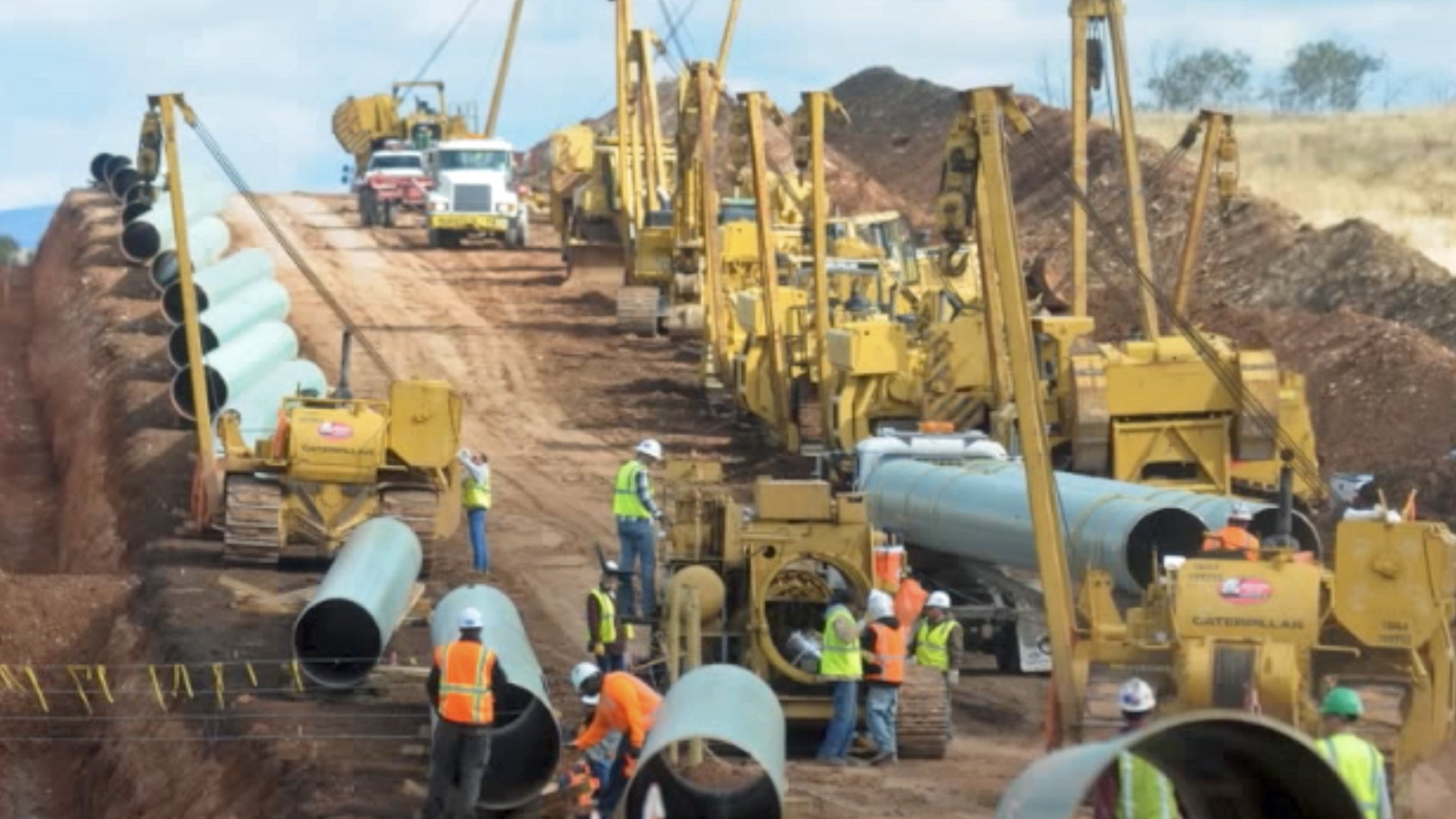By Cat Urbigkit, Range Writing columnist
Part 1 of 4-part series
Over a decade ago, an energy company cut a deal with an anti-livestock group over the proposed Ruby Pipeline.
In exchange for the company depositing $15 million into a “conservation” fund, Western Watersheds Project (WWP) agreed not to protest the pipeline’s approval.
At the time of the deal, WWP said it wouldn’t be able to use the fund as a war chest, and the fund would be used to retire federal grazing permits. Have those commitments been kept? I had look at public records to track the money.
Here’s what I found:
- The fund’s first major expenditure was to purchase a 10,000-acre Nevada cattle ranch. The fund has owned the ranch for a decade – although the ranch purchase and ownership are not disclosed on the fund’s website.
- The fund now holds public lands grazing permits and received $52,000 in grazing fee revenues in 2020.
- The fund has given more than $2.2 million to Western Watersheds Project in six years – nearly half the fund’s grant expenditures during that time.
A review of filings with the Internal Revenue Service and other publicly available documents indicates that since its inception, most of the Fund’s expenditures fall into three major categories: for the purchase and management of a private ranch in Nevada; grazing allotment retirements; and providing support to WWP.
The Ruby Pipeline Deal
The Ruby Pipeline is a 42-inch diameter pipeline system spanning nearly 700 miles from southwestern Wyoming’s Opal, traversing northern Utah and Nevada, to the Malin, Oregon, hub, just across the state line from northern California.
It provides natural gas from the major Rocky Mountain basins to consumers in California, Nevada, and the Pacific Northwest. El Paso Corporation (now Kinder-Morgan) filed an application to construct the pipeline in 2009 through its Ruby Pipeline LLC subsidiary.

In 2010, anti-grazing group Western Watersheds Project announced, “After much thoughtful negotiation, Western Watersheds Project and Ruby Pipeline, LLC have struck a deal establishing the Sagebrush Habitat Conservation Fund with a mission of buying and retiring federal grazing permits that are voluntarily offered.” In exchange for $15 million into the fund, WWP “agreed not to litigate or seek delay in the construction of the Ruby pipeline.”
In announcing the deal, WWP pointed out: “Significantly, the money from the Fund can’t be used as a war chest for WWP. Funds must go directly to the Fund in support of its conservation mission, not to WWP.”
El Paso also made a similar deal with the Oregon Natural Desert Association, but after facing backlash from county governments along the pipeline route, pipeline officials soon regretted their decision to fund the anti-grazing group and agreed to pony up an equal amount to an endowment for the Public Lands Council to serve the public lands livestock industry.
Although WWP made the deal to not delay the Ruby pipeline, the group’s frequent litigation partner, the Center for Biological Diversity (CBD), was not party to the agreement. CBD sued over the pipeline but failed to get an injunction against its construction.


Eventually, CBD won a court ruling that the Bureau of Land Management had failed to adequately assess the impact of the pipeline on the cumulative loss of sagebrush steppe vegetation and habitat.
The federal agency finalized the revised analysis in late 2013 – two years after the pipeline was placed in service. At a price of $3.5 billion, the pipeline had begun flowing natural gas to the West Coast in the summer of 2011.
Public Records
ProPublica has an online Nonprofit Explorer website where anyone can research the financial records of non-profit organizations in the United States. The searchable ProPublica database contains copies of Form 990 filed with the Internal Revenue Service.
Form 990 is a required annual informational filing that provides an overview of a tax-exempt organization’s activities, governance, and finances. The Sagebrush Habitat Conservation Fund is classified by the IRS as a 501(c)(3) nonprofit organization as a private foundation.
The Fund
According to its IRS filings, the Sagebrush Habitat Conservation Fund (the “Fund”) is governed by a three-person board of trustees, with one director designated by WWP, “and the other two directors appointed by the agreement of the majority of the directors, subject to the written approval of Western Watersheds Project.”
Each of the board’s three directors are paid between $15,000-$16,000 annually, and WWP founder Jon Marvel has served on the board since 2011. Also serving on the board are Floyd Robertson of Kinder Morgan, Inc., and Tom Blanchard, a historian and former county commissioner for Blaine County, Idaho.
According to its public filings, the Fund “shall be operated exclusively to protect and restore sagebrush habitat in the American West to benefit native wildlife through voluntary conservation.”
In its most recently available IRS filing (for 2020) the Fund reported it held over $10.5 million in assets, including $2.3 million in land and buildings, and $8 million held in publicly traded securities.
Buying the Ranch
A year after opening its doors, in 2011 the Fund made its first deal when it acquired a $2.4 million private ranch in Nevada. Nevada tax records indicate this was a bankruptcy sale, from a person who had owned the property for about eight years before the ranch and its 1930s-era single-family residence exchanged hands to the Fund for the equivalent of $240 per acre.
The Fund still holds title to the 10,000-acre ranch – although that is not revealed anywhere on the fund’s website – and in 2019, the Fund also acquired an additional 35 acres of undeveloped land in the same area. Although that information is not revealed in its IRS filings or on its website, Washoe County, Nevada tax records document the Fund’s acquisition of this additional property.
The Fund reported to the IRS that it is trying to make a deal with the Bureau of Land Management to “retire” the 20,000 acres of public land grazing allotments associated with the ranch. Little public information is known about the ranch deal, and how the property is being managed since the Fund acquired it in 2011.
According to an IRS filing, “In August of 2011, the organization purchased its first major conservation project, known as the VYA Ranch located in northwestern Nevada … The project involves the acquisition of 9,980 acres of private lands and two BLM grazing permits covering approximately 50,000 acres of public lands.”
By the next year, and without explanation, the Fund revised its BLM grazing permit acreage down to 20,000 acres associated with the ranch purchase.
In its 2019 filing, the Fund noted that no grazing had occurred on the allotments since it had acquired ownership in 2011, and “we continue to seek retirement on the 20,000 acres of allotments.”
But in 2020, the Fund reported “only limited grazing from adjacent public and private lands has occurred on the allotments” and in a separate line item, reported it had received nearly $50,000 in grazing fee revenues in 2020.
That indicates that the Fund wasn’t allowed to continue its non-use of the federal grazing permits it acquired with the ranch purchase, so it probably subleased the grazing to an actual rancher.
The Fund noted in its IRS filing that it “continues to seek permanent retirement from livestock grazing for the allotments.”
Funding WWP
In its filings with the IRS, WWP states that its mission is “to protect and restore western watersheds and wildlife through education, public policy initiatives and legal advocacy.” But the homepage of WWP’s website puts its primary interest more bluntly: “Fighting for the future of the American West: Together we can protect western public lands from the destructive effects of livestock grazing.”
Although WWP claimed the Sagebrush Habitat Conservation Fund money wouldn’t go to WWP, records filed with the IRS indicate WWP received $2,238,850 from the fund in six years: $100,000 in 2015; $440,000 in 2016; $320,000 in 2017; $400,000 in 2018; $450,000 in 2019; and $528,850 in 2020.
Nearly half of the Fund’s total expenditures in 2020 were to WWP. The Fund’s grant of $528,850 provided 40% of WWP’s total revenue in 2020, while 65% of WWP’s expenditures were for employee salaries and other personnel costs.
Because WWP controls appointments to the Fund’s board, WWP is the only specified recipient of grants from the Fund in its IRS reporting documents. But other documents by the Fund state that it had also partnered with other organizations, including the National Wildlife Federation, “for voluntary grazing permit waivers and retirements.”
For the last three years in which IRS records are available (2018 through 2020), 65% of the Fund’s grant expenditures went to WWP.
The connection between the Fund and WWP deepened in 2020 when WWP announced that Dave Stricklan had joined its staff in a jointly-funded position with the Sagebrush Habitat Conservation Fund as a sagebrush specialist and allotment buyout coordinator.
This is part one of a four-part series. Part two will focus on the Fund’s private deals to retire grazing allotments.
Cat Urbigkit is an author and rancher who lives on the range in Sublette County, Wyoming. Her column, Range Writing, appears weekly in Cowboy State Daily.
Disclaimer: Urbigkit is an enthusiastic supporter of pastoralism around the globe, including public lands livestock grazing in the American West. She’s gone on record as being anti-WWP.





